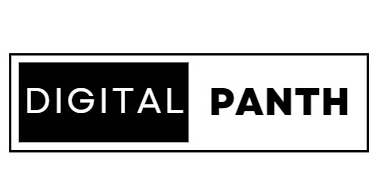The Employees’ Provident Fund was established under the Miscellaneous Provisions Act, 1952 (“Act”), which is applicable throughout India. The Employees’ Provident Funds and Miscellaneous Provisions Act, 1952, governs the Employees’ Provident Fund Scheme (EPFS). It is a long-term retirement savings plan that is managed by the EPFO.
Read: What is a Systematic Investment Plan (SIP)?
According to the EPF Scheme, both the employee and the employer must contribute an equal amount to the provident fund account. When the employee retires, the employee gets a lump sum payment along with interest.
Every factory or industry listed in Schedule 1 of the Act that employs 20 people or more is subject to the Act, as the Act is applicable to any other institution of the Central Government. If the establishment is designated by the Official Gazettes, it gets covered under this act even if there are fewer than 20 employees.
Employees Provident Fund Organization (EPFO)
India’s provident funds are governed by the EPFO, a non-constitutional organization. It is the largest social security organization in the world in terms of both clients and financial transactions.
The Board of Trustees is composed of representatives from the following organizations that oversee the Employees’ Provident Fund:
- Employers and workers,
- State government
- Central governments
The Ministry of Labour and Employment, Government of India, oversees the administration of the EPF Scheme 1952 through the Central Board of Trustees and Employee Provident Fund Organisation (EPFO). Both employers and employees are required to make financial contributions to the program. However, only employers are allowed to deposit money into PF accounts. In the event of an emergency, the concerned employee is entitled to the cumulative total after a set amount of time and the entire amount upon reaching retirement.
With 138 offices spread out around the nation, the organization has a training facility where its officers, staff, and representatives of employers and employees can attend courses, training, and seminars.
Benefits of the EPF Scheme
- Tax-Free: The EPF Scheme of 1952 provides for completely tax-free savings.
- Interest: After a specific time period, as determined by the relevant authorities, beneficiaries of Provident Fund schemes are also entitled to a specific amount of interest over the PF sums.
- Post-Retirement Benefits: The Employees’ Provident Fund Scheme, 1952 Rules’ goal is to provide benefits for workers after they have retired from their jobs. The individual must have fulfilled service requirements for the Employees Pension Scheme for at least 10 years.
- Emergency Access: Since the EPF program provides for partial withdrawals in cases of emergency (such as marriage, death, or schooling), there is no need to wait until retirement.
- Loss of Income: The Employees Provident Fund Scheme of 1952 steps in to help if an employee loses their job or other source of income for longer than two months.
- Life Insurance: The Employees Deposit Link Insurance allows the relatives of the deceased to receive EPF funds in the event of the employee’s untimely death. For many workers, it eventually turns into a life insurance payout to provide financial security for their loved ones.
- Widespread Access: The EPF account is global, just like a PAN card number, and does not require repeating the open-close process in the event of a change in job. The Employees Provident Fund and Miscellaneous Provisions Act, 1952, is applicable to any subsequent employment after an account is formed.
Eligibility
- Employer’s eligibility: If an organization employs fewer than 20 people in total, the employer is not required to register for an EPF scheme. Even though the latter situation involves criteria and several processes, a business can nonetheless obtain an exemption if the majority of employees agree to it. However, if there are more than 20 employees overall, the company must sign up for the EFF program.
- Employee’s eligibility: Every Indian citizen working in an establishment with more than 20 employees is obligated to be a member of the EPF scheme. Only those who earn less than INR 15,000 in a year have to join the Employees Provident Fund (EPF). It means that if the employee’s pay is less than 15,000 per year at the time of hiring, he is not required to pay into the provident fund. He can only join the Employees Provident Fund with permission from his employer and the assistant PF commissioner.
Contribution of Employer and Employee
The employees, who are working in any establishment, are liable to contribute 12% of their salary. They are required to make mandatory contributions of 12% to the EPF Scheme 1952 if their annual salary is Rs. 15,000 per annum or more (Basic + Dearness Allowance). As a result, it becomes one of the fundamental rights of workers in India.
The Employees Provident Fund Scheme, 1952, offers the option to join or not for those making Rs 15,000 (Basic + DA) or less per year. At the same time, the employer is required to contribute 12% to the EPF account.
The objective of the scheme
When an individual retires or leaves their job, the EPF Scheme pays them a lump sum payment by managing their provident fund. This program is designed to assist employees in the public, private, or government sectors financially.
For the scheme’s participants, it aids in providing social security.
Universal Account Number (UAN)
The Ministry of Employment and Labour, which is part of the Indian government, assigns a universal account number (UAN) to each employee who manages a PF account. His employer used to keep track of or know details about the supplied funds (PF) he received. When an employee joins a new company, he is given a new PF account.
However, after the creation of the UAN, the employee receives all of his PF accounts connected with several organization IDs in one location. So the challenges an employee faces when joining a new organization are overcome with UAN, and with UAN, they can monitor operations to determine whether there are any payment issues.
All individuals covered by the Employees’ Provident Funds and Miscellaneous Provisions Act, 1952, must now have a Universal Account Number (UAN). Every employee to whom the EPF Scheme is applicable is given a 12-digit number called a UAN by EPFO.
The UAN will display all associated PF numbers, including those from the new employer and the former employer. Therefore, the UAN serves as a hub for the various member IDs that have been issued to the person by various employers. It is a one-time, permanent number that won’t change during the course of a person’s career.
When you join a new company, tell your employer to provide you with the “New Form No. 11-Declaration.”
Three Schemes Under One Umbrella
The Employees’ Provident Fund Scheme, established in 1952, kills three birds with one stone by:
1- The Employee Provident Fund, founded in 1952, is one program that encourages retirement savings. The Employees’ Provident Fund Schemes may be created by the Central Government and announced in the Official Gazette for a specific group of employees as well as the establishments or group of establishments to which they will be applicable. Immediately following the creation of the plan, a fund that will be managed by the Central Board, an entity created by the central government, must be established.
2- Employee Pension Scheme, 1995 (EPS): This program intends to offer pension benefits after retirement. By publishing a notice in the official gazette, the Central Government may create a plan known as the Employees’ Pension Scheme for the following purposes:
- (a) benefits for superannuation, retirement, or permanent total disability provided to staff members of any establishment type to which this Act applies; and
- (b) pensions for widows, widowers, children, and orphans paid to recipients
3- Employee Deposit Linked Insurance Scheme, 1976 (EDLI): This program provides life insurance to loved ones in the event of an unexpected death. By publishing a notice in the official gazette, the Central Government may create a program known as the Employees’ Deposit Linked Insurance Scheme, which offers life insurance benefits to the employees of any establishment or group of establishments to which the EPF and Miscellaneous Act applies.
Rules For The Withdrawal of PF Amounts
- Any of the following situations allows for a full withdrawal of EPF:
- When a person retires from his job
- When he is unemployed for two months or longer.
- Under specific conditions and in accordance with specific requirements such as marriage, education, home loan repayment, and renovation of a house, which have been briefly covered, partial EPF withdrawals are permitted.
- In cases of early employment years, only the employee’s contribution is included in the premature withdrawal of benefits under the 1952 EPF program.
- After the initial five years, employer and employee contributions are included in the PF amount that can be withdrawn.
- Employees’ provident funds are received once in large quantities, tax-free, upon maturity.
Conclusion
The Employees Provident Fund Scheme, 1952, was introduced to India on October 1, 2008, under Paragraph 83 of a Government of India announcement. Pension Plan for Employees A particular provision for foreign workers, as specified in para. 43-A gave rise to 1995. After 2014, the EPFO website portal made it simple to access. This Act is primarily intended to encourage employees to save during their job so they can use it in their old age, during illness, or in an emergency.



Leave feedback about this